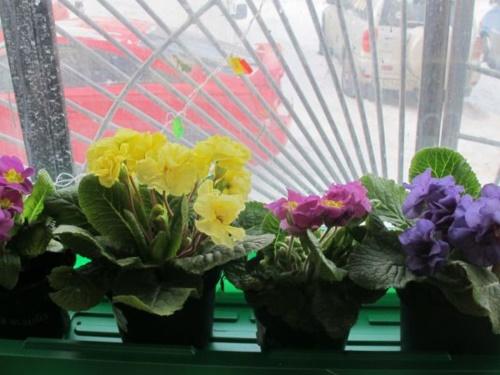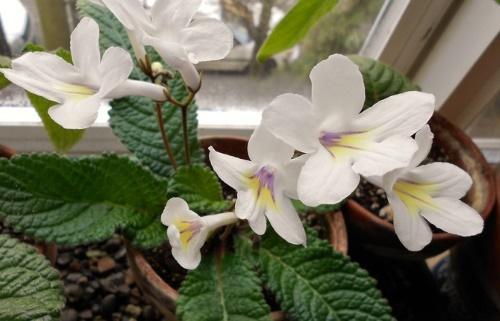We take care of room primrose correctly
 A small compact rosette of soft wrinkled leaves, in the center of which bright large inflorescences rise - this is a beautiful primrose. Like all representatives of the primroses family, she opens her buds one of the first in early spring. In addition, it will please with its flowering again, with the arrival of winter.
A small compact rosette of soft wrinkled leaves, in the center of which bright large inflorescences rise - this is a beautiful primrose. Like all representatives of the primroses family, she opens her buds one of the first in early spring. In addition, it will please with its flowering again, with the arrival of winter.
Grow outdoors garden primrose, but there are also varieties specifically for indoor environments, as well as universal hybrids that can grow both at home and outdoors.
Home primrose is more capricious in nature than those plants that live in the garden, so it is important to know how to properly care for the primrose so that the flower not only does not disappear, but also blooms every year. So, what does the flower love and what is it afraid of? To answer these questions, you need to know the following nuances:
- how much light does primrose need;
- what temperature should be in the room;
- what soil is best for planting;
- how often to water, feed and replant.
Lighting and temperature
Primrose is demanding on light, and on the northern windowsill you can't wait for it to bloom. At the same time, direct rays are detrimental to the delicate soft foliage.
The best place for the bush will be the east window.
Garden varieties of primrose have a more stable and strong character in relation to cold, but indoor specimens like heat more, but relative - after all, these are not tropical exotics and if the room is too hot, the bush will simply turn yellow and disappear. To prevent this from happening, it is necessary to choose a room for the plant in which the air temperature does not fall below 18, and does not rise above 20 degrees Celsius.
The exception is the winter period - at this time it is better to keep the primrose in a light cool, 16-18 degrees Celsius.
Primrose responds well to humid air, but does not tolerate spraying. To provide moist air, you can put a glass of water next to the flowerpot.
Primrose soil
The plant loves light, loose soil with a slight acidity. You can purchase a ready-made soil mixture specifically for primroses (that is, primroses), or you can buy the necessary components and mix them at home in equal proportions, namely:
- peat;
- ordinary leafy ground;
- sand.
It is better to plant primrose in a wide, but not very deep, bowl.
Watering and fertilizing mode

When primrose blooms, it requires frequent and abundant watering, while water must be poured at the edge of the pot, not allowing it to fall into the outlet and on the leaves, or even better, use the immersion method. It is important to let the soil dry out between waterings, otherwise the roots will rot.
Complex fertilizers containing nitrogen (for growing leaves), potassium and phosphorus (for setting buds) are suitable for feeding a flower. They need to be entered in the following frequency:
- from spring to late autumn, when the bush begins to prepare for flowering;
- in the fall (in November), take a break until the buds appear, and then resume feeding during the entire flowering, but at the same time excluding nitrogen from the complex;
- when the primrose fades, suspend fertilization again for a month, and then continue.
You need to feed the flower no more than once every 2 weeks.
Young primroses are transplanted annually, and larger and older bushes - at least every 2-3 years. The transplant is best done in September.